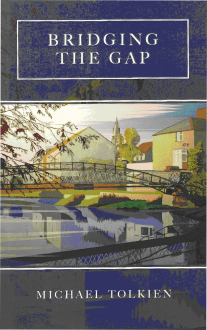



Bridging the Gap
Crossing the swollen, mud-
I see ruined Henchard stare into the Frome
sliding towards Blackwater Pool
that gathers what’s left of anyone who
follows their regrets into the depths.
Leaning on the white Victorian callipers
of Albert Bridge I shore myself up
with fragments: ‘ The river is a strong,
brown god…’or ‘Your god is too small…’
involuntary sound piled up for the mind to rest on.
Or so I may delude myself. Happier those
who look at the river in all its shades and moods,
notice only its height above the banks,
its colour, how it slaps at obstacles.
To them a body of water’s no matter for quoting.
Happier still a child who throws his toy
into the spate and loves watching it career
brightly eastwards round the next bend
which is nowhere and of no concern.
A Hair’s Breadth
When you suddenly felt faint
and the room began to pitch and slew,
I held down your head to keep
the blood flowing there.
Our life together hit me in
a snapshot, and I held fast to it
as if all depended on each breath
that stirred the hair on my arms.
We were clinging to a cliff face
and I must not for a split second
release my fear in case concern
for me made you lose your hold.
I’d heard that leading climbers who hit
an impasse should keep quiet
and look as if they’ve paused to find
a better way round and on.
This collection begins by seeing writers or other artists as detached observers with
an agenda. How do they close the divide with day-
ACKNOWLEDGEMENTS
My wife Rosemary is first reader of most poems in various stages of development, and her objective judgments have been invaluable.
Continuing to ‘workshop’ problematic poems with Rutland Poets is a great advantage in taking a fresh look at rejected and new work.
Particular thanks are due to my editor, John Forth, who won’t let me off the hook until obscurities and ‘uncreative’ ambiguities are ironed out, and who is quick to spot which pieces are not ‘earning their keep’.
I am also most grateful to Paul McLoughlin who read through the whole proposed collection with a discerning eye. His comments made me reconsider many crucial details of expression and content.
COVER ILLUSTRATION and DESIGN
The illustration is taken from Rosemary Tolkien’s original painting of Albert Bridge in Stamford. The cover was designed and processed by Chris Doyle
This book is available direct from the author